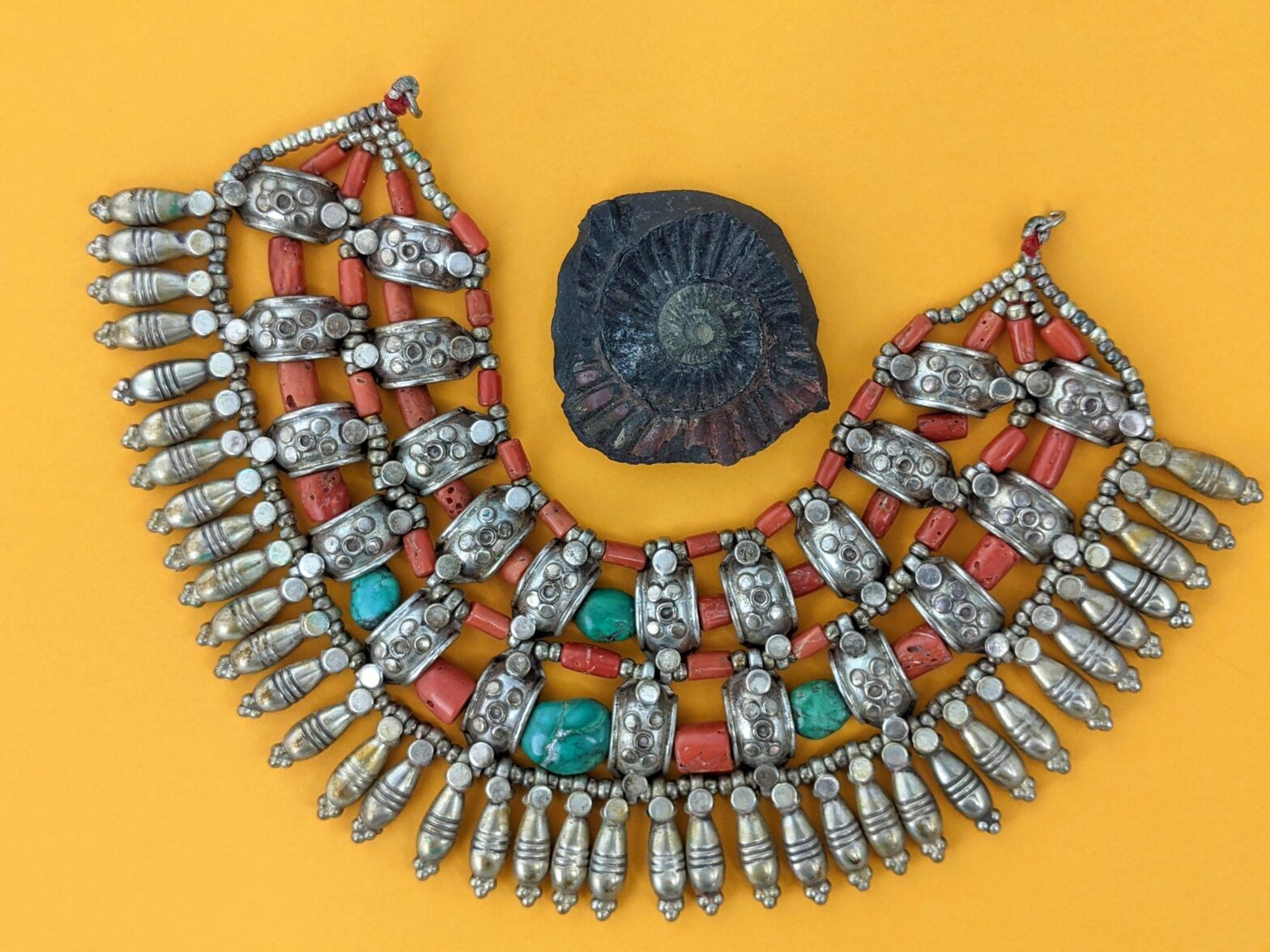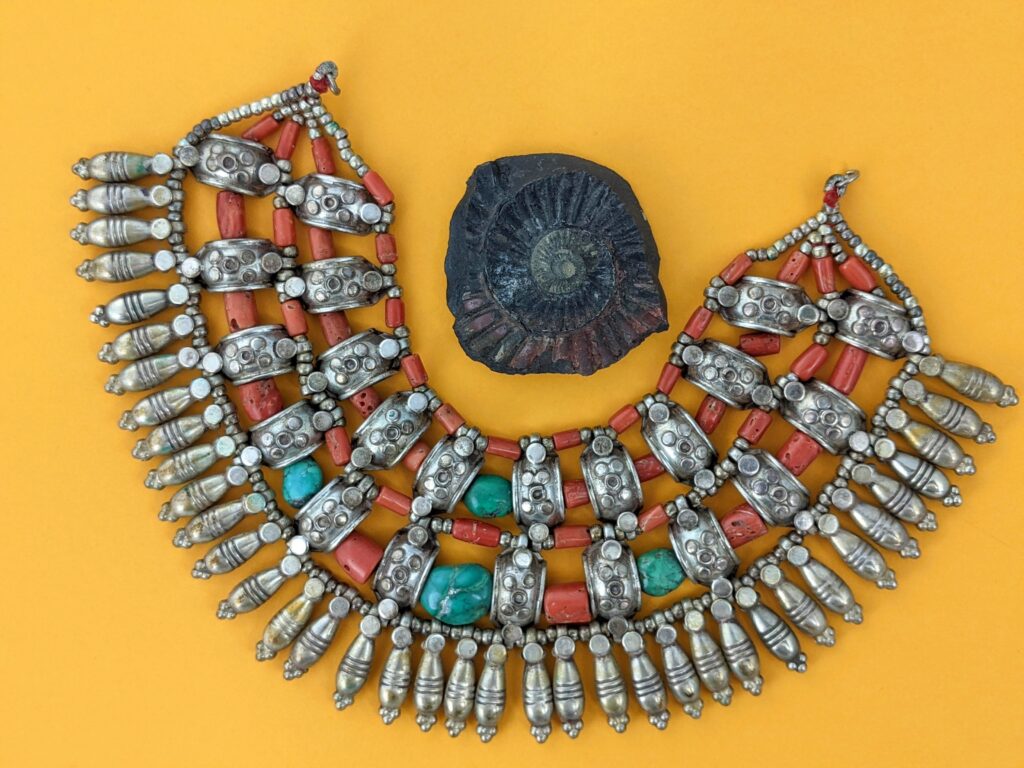
Why buy vintage jewelry when you can get an inexpensive, shiny, perfectly machine-made item for a few dollars?
The answer is a bit more complicated than the question. So let’s take a look at why authentic vintage is so desirable.
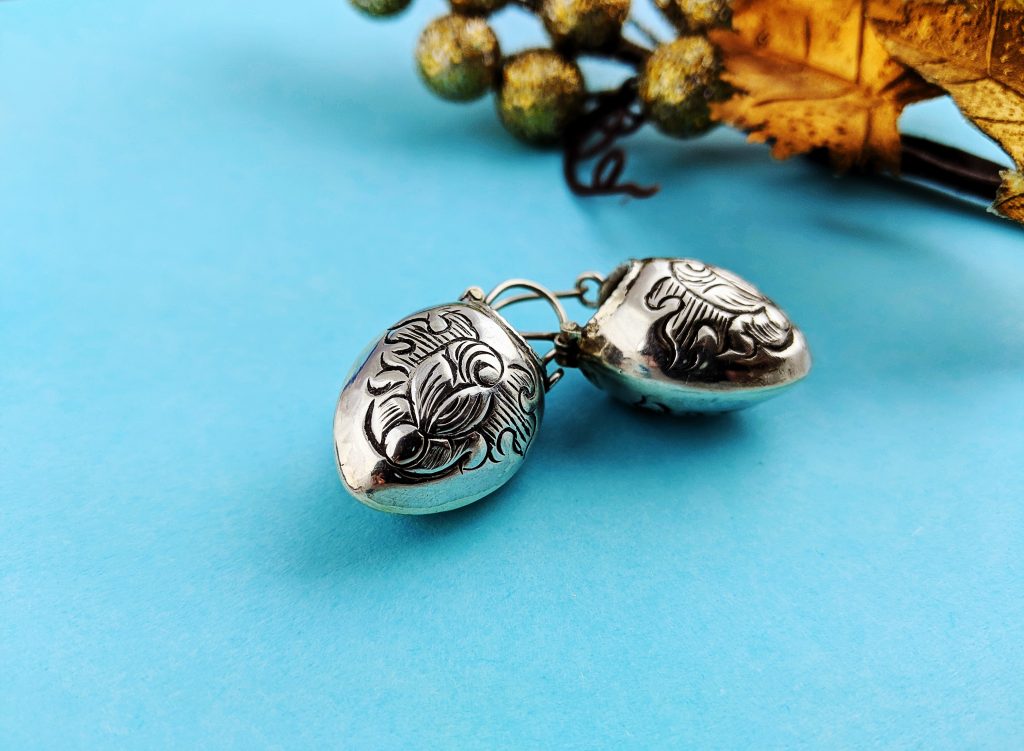
Origin
First, consider where and when a piece of jewelry was created. Where an item was made will be influenced by ethnic groups, traditions, religious and social practices, a relatable aesthetic, as well as available materials and skilled craftsmen. Today, ‘vintage’ is generally considered to be between 20-99 years of age. Anything over that falls into the category of ‘antique’. Now and then we are asked why something costs so much. Well, an obvious response runs something like this: it features a rare stone, displays specialized silversmithing techniques, or has a certain spiritual context. But the most honest answer is that it is worth so much to the person acquiring it.
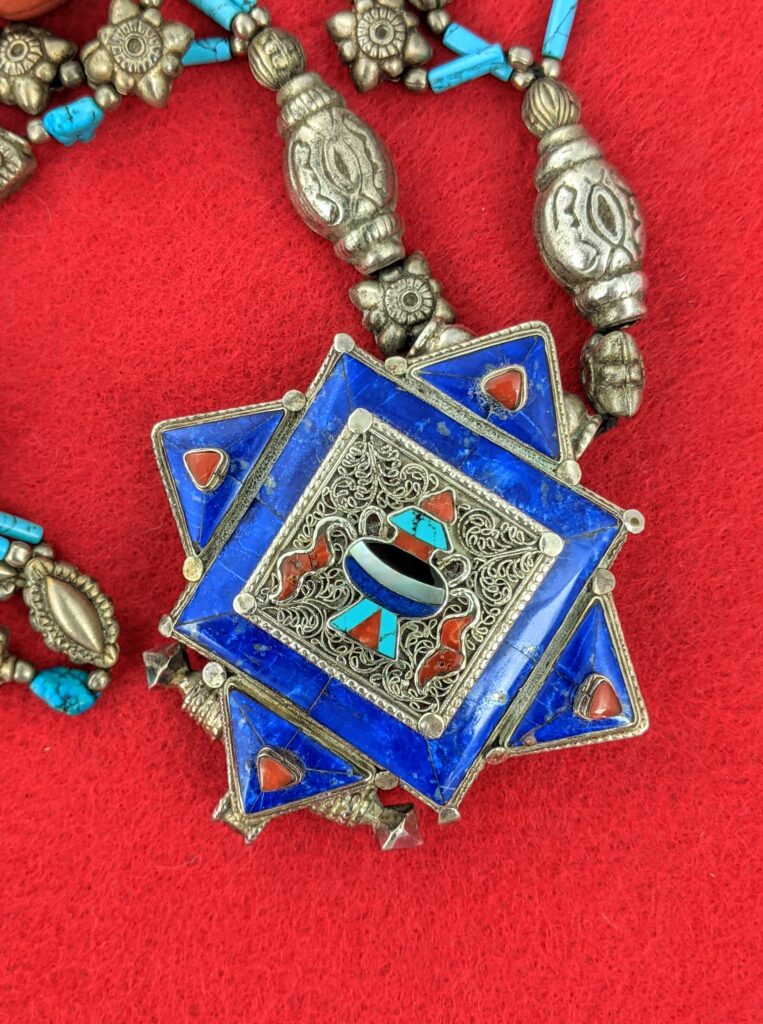
Story
The most important aspect of vintage, however, is story. In every culture of the world, jewelry is a direct visual representation of beliefs, custom, and tangible heritage. This may include personal statements, commentary on social status and wealth, taste, utilitarian value, and spiritual practice, among others. Who wore this item, and why? Was it custom made or bartered in a market? Was it handed down through a family member? Does it connect the wearer to a group or sect or identify them in some other way? Himalayan jewelry, rooted in a rich heritage, has always had a deeper, more profound meaning. Stones carry symbolic significance, embody traits, and are believed to have a power that is entwined with nature. For example, pendants like a gau can be portable personal spaces, almost like shrines; shapes can indicate celestial orientation or aid in meditation and focus. Even the search for vintage arts is a journey in itself, making us open ourselves to new concepts, thoughts, emotions, and experiences.
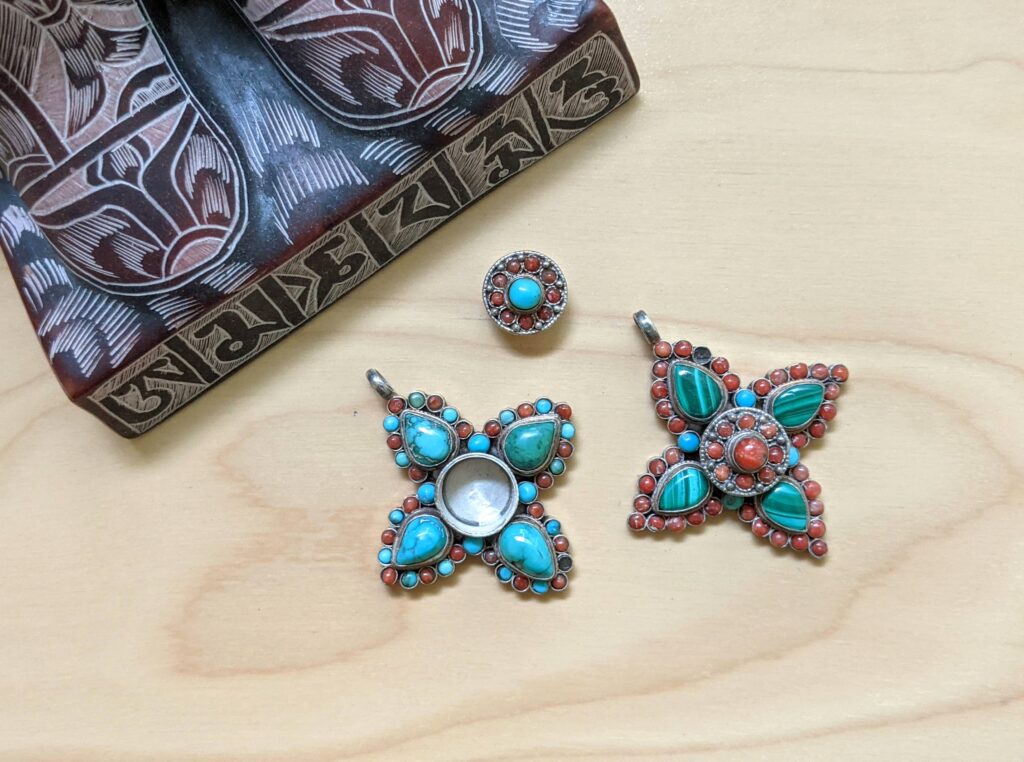
Unique Handcraft
People have always valued something made by hand; that implies that it will not always be perfect, but it will always be singular and exclusive. Vintage says that small imperfections are OK. They give an article character and dimension, while a varying level of wear makes them particularly attractive with an almost ‘human’ quality. The generational arts of silversmithing used to be handed down from grandfather to son, but these days many younger people have left to seek lives outside of the Himalayas and so the old skills are slowly declining and giving way to Western tastes and styles. This is also why genuine vintage jewelry by an accomplished artist has a higher value. In a world where many things belong to a cookie-cutter culture, wearing vintage sets you apart in terms of style and appreciation for quality and skill. It arms you with the ability to understand and share the history of that wearable art within a cultural, social, and spiritual context.
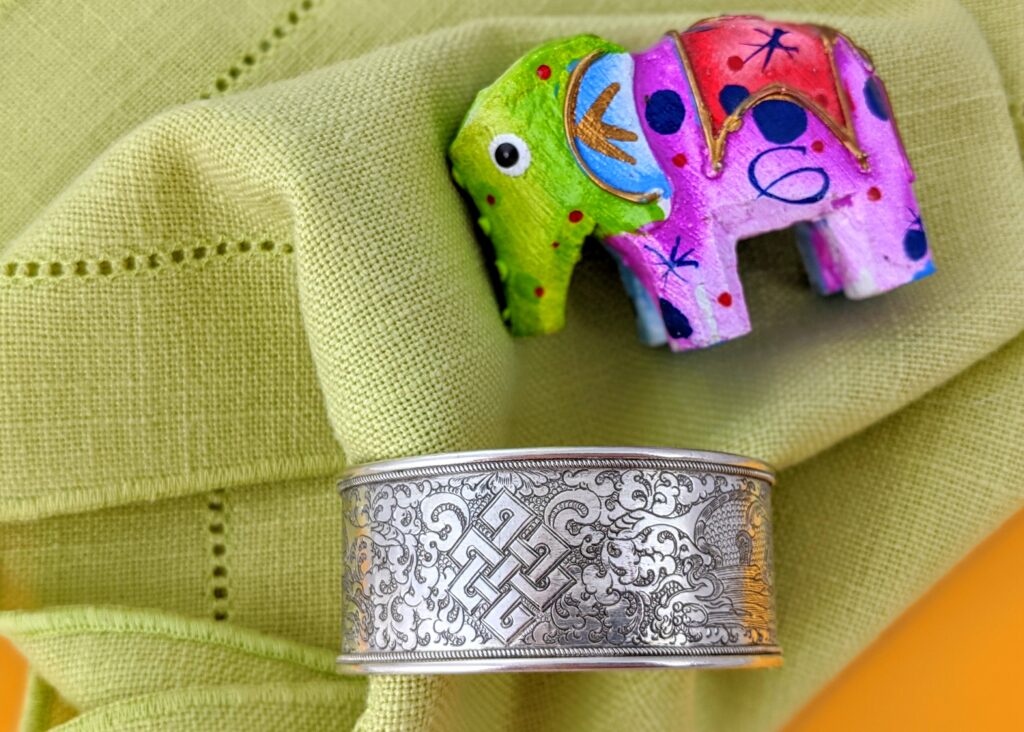
The Ultimate Recycling
Buying vintage benefits the environment by recycling already completed sterling silver and/or mixed metals that might end up in the landfill. It also positions makers to upcycle totally unrelated items and repurpose them into unexpected creations. It supports local craftsmen whose market has been impacted by cheaper imports. And remember, by buying vintage you are carrying forward the life of an object and gifting it with new layers of meaning. You have the opportunity to create your own story, building upon the past and moving into the future.
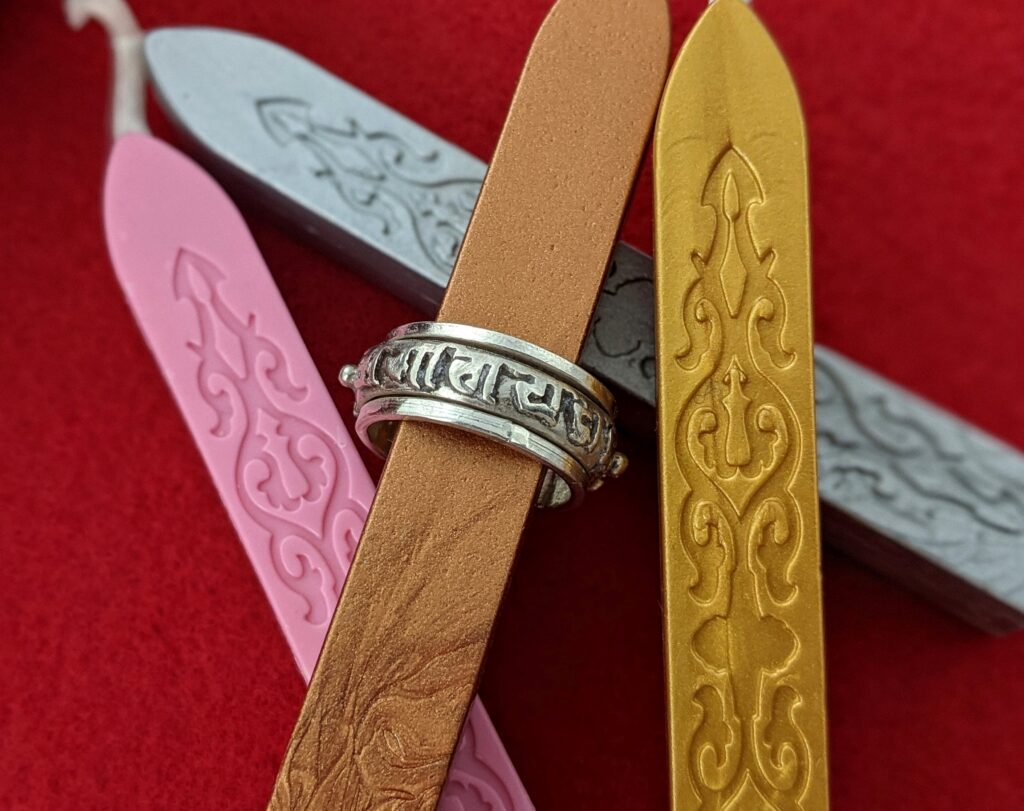
The “I Love It” Factor
Have you ever seen a work of art or any other material thing and been immediately attracted to it? Maybe it’s the color, perhaps the shape or style – more often than not there is something indefinable but very alluring about the object that just draws you in. Many people are fascinated by the exotic lure that vintage jewelry provides. In the same way people can be charmed by someone’s looks, personality, or that invisible ‘aura’, so, too, can we be captivated by a piece of adornment. Jewelry is, after all, a key component in the eternal search for expressing one’s individuality.
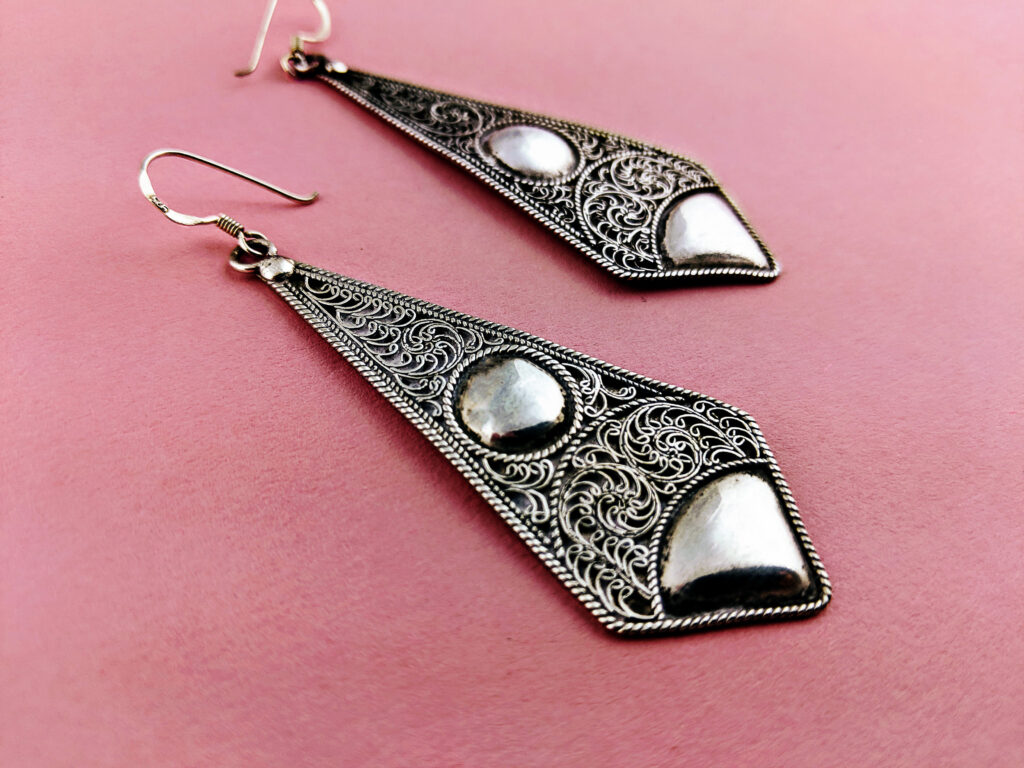
(The Question of) Cultural Appropriation
This has become a current hot topic among many people. One might call some of them ‘cultural hoarders’. They feel no one else can or should feel an affinity with their lifestyle, heritage, traditions or beliefs to the point of wearing or owning them. But this goes directly against those things we prize so much today: cultural diversity, inclusivity, tolerance, and acceptance. You don’t have to be Austrian to love a painting by Klimt or want to hang a copy of it on your wall. Likewise, if a piece of jewelry appeals to a person – whatever the reason or emotion it conjures up – and if it speaks to you and resonates with authenticity and not artifice – then you should follow what you feel and enjoy owning and wearing a thing of beauty or of special significance.
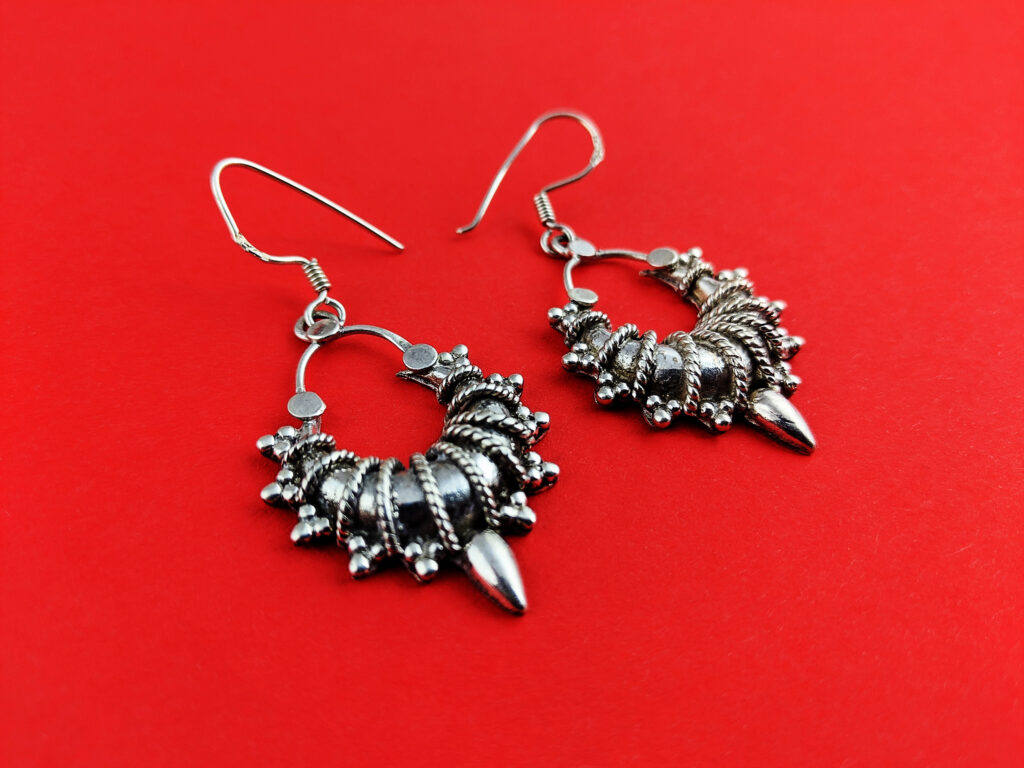
The Take-Away
At Utpalasia we’ve spent years collecting tribal and ethnic adornments from around the world. We actually wear many of our traditional Himalayan pieces during our cultural performances and programs. Finding unusual treasures in the most unexpected places and getting to know their origins and symbolism never gets old, and it has been a humbling experience at times. We’ve met some of our best friends in the field over countless cups of tea, talking about family and life, love of artistic expression and the dedication to work. Earning the trust of these remarkable individuals, sharing in community, and finding mutual respect – these things are also what makes sourcing for vintage such an inspiring adventure.
We pride ourselves in providing authentic vintage handcrafted jewelry and accessories from Nepal, Tibet and India. Some of these have common origins, while others are superb creations of astounding technique. But all possess that certain something that makes them notable pieces of wearable art.
Utpalasia is honored to support traditional artists and work with clients who are eager to learn more about the who, what, when, where, and why of an item. We invite you to take advantage of our new free P.A.S.S.© program and find that perfect piece for yourself or someone you love!
*P.A.S.S. is Utpalasia’s Personal Assisted Shopping Service for discerning clients and collectors.

